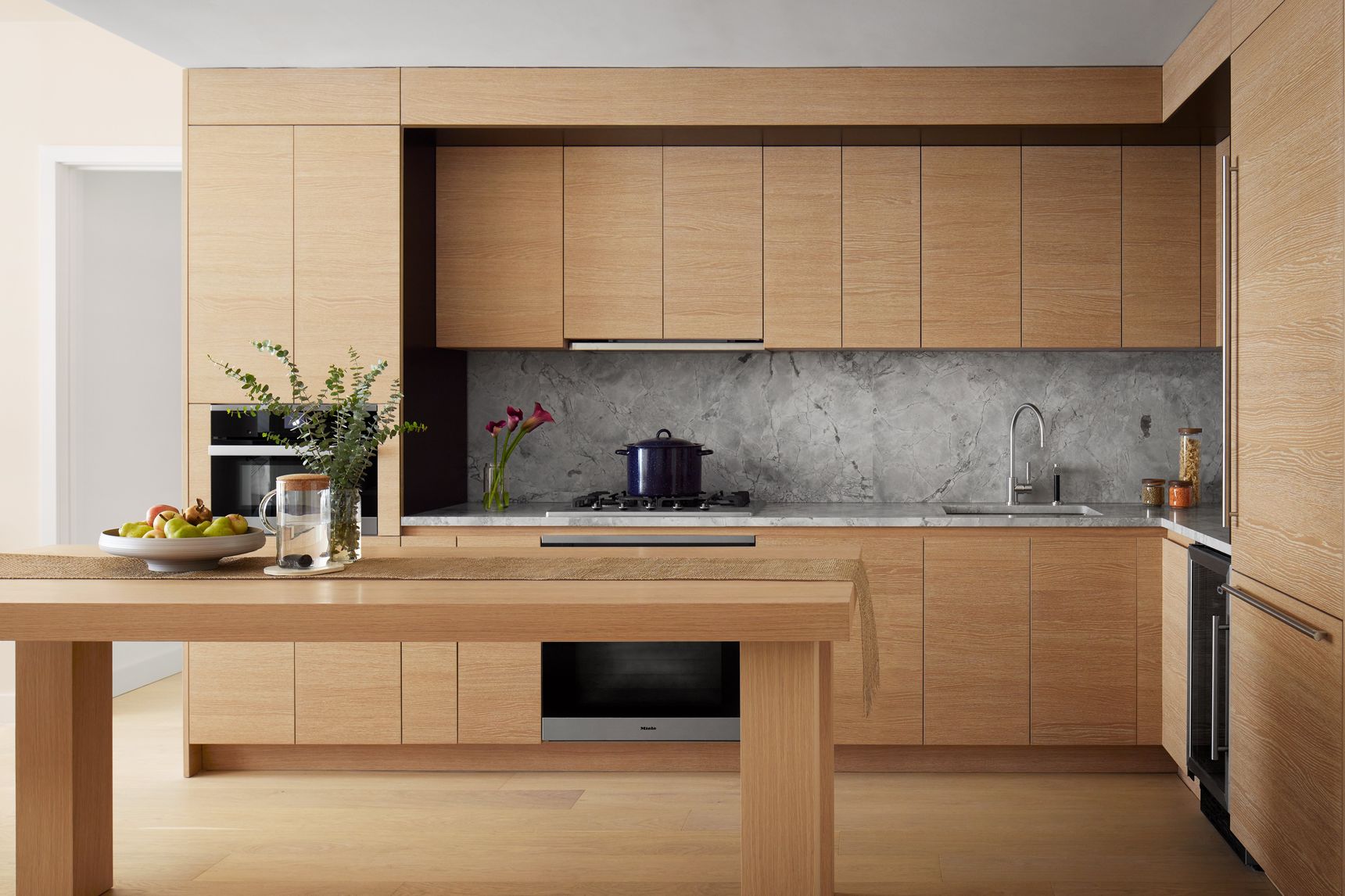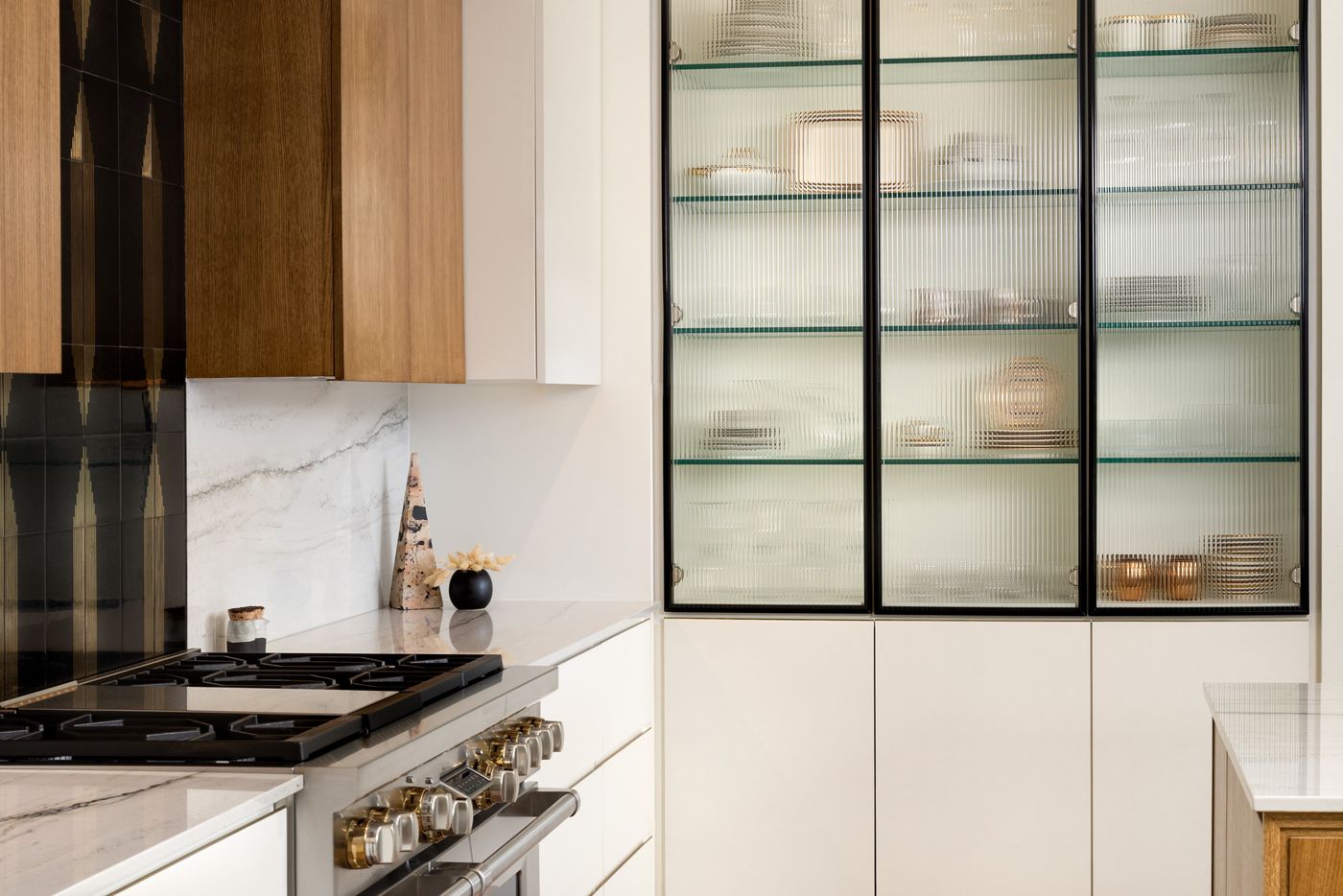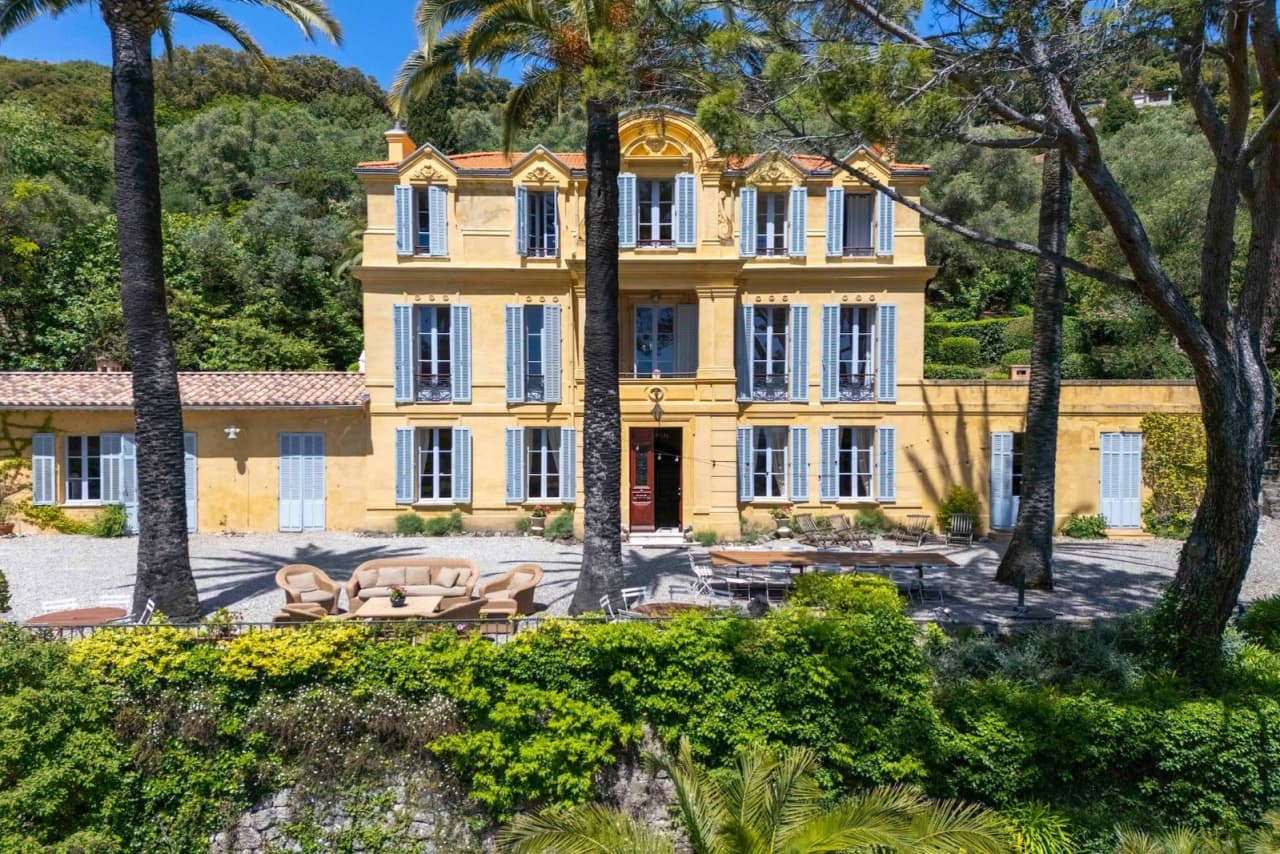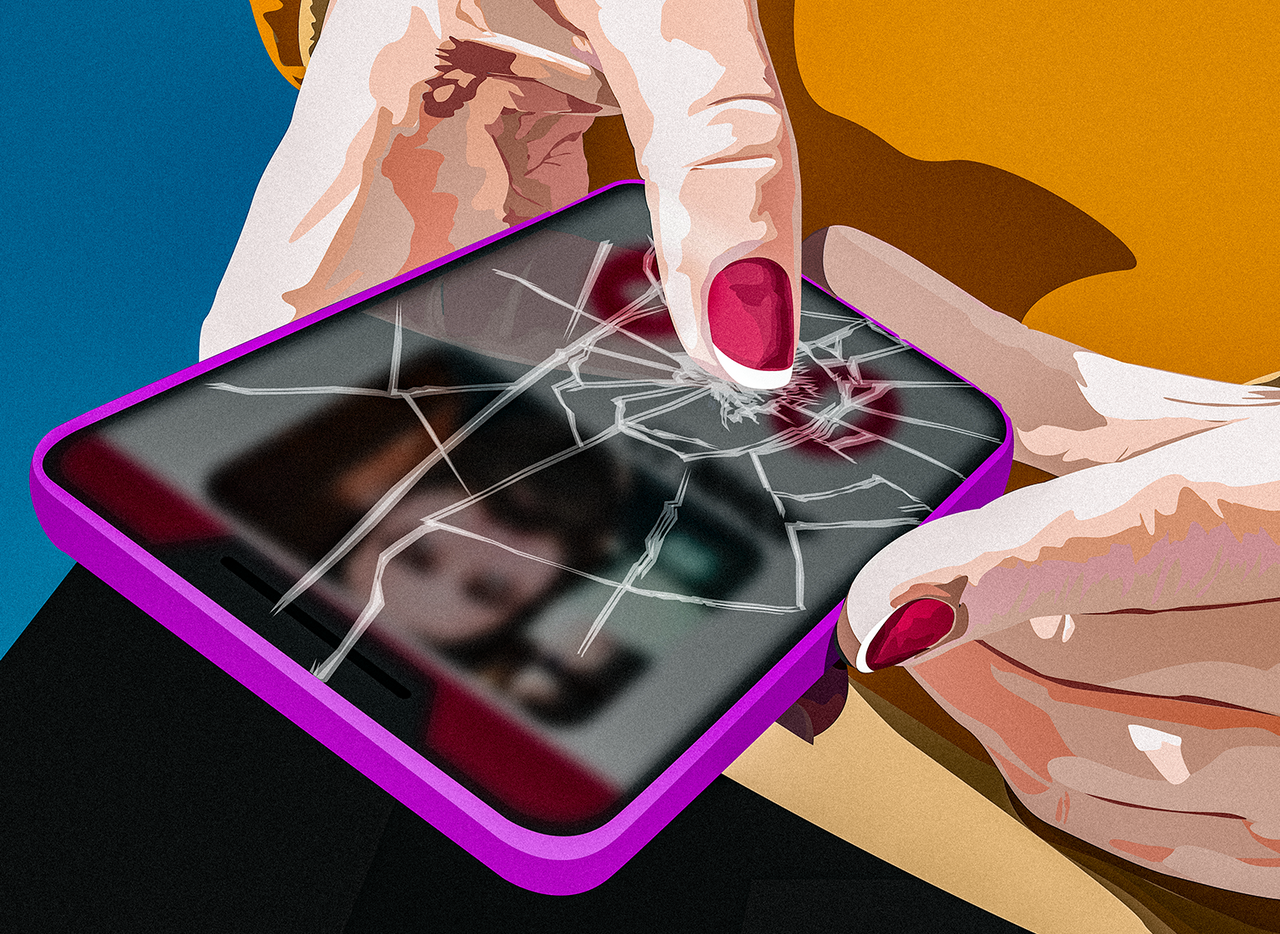8 Interior Design Ideas to Update Your Kitchen
Architects and other design pros share new kitchen trends.
IF EVERYTHING wants to stand out, nothing will,” said Kelsey Hills, a Dallas homeowner who hired a local pro to quiet the centre of her house, the kitchen. Architect and designer Eddie Maestri infused the room with white oak—on the floor, flat-front cabinets and island. “Having a kitchen without a lot of competing design elements calms me,” said Mrs. Hills.
Enter the era of seamless kitchens. “Visual cues are changing,” said Mr. Maestri. Gone are look-at-me hoods and, for some, hulking marble islands. Panelled cabinets bejewelled with pulls are giving way to overlay fronts and hidden hardware. The visual cacophony of open shelves is history.
When Ferguson Kitchen, Bath & Lighting Gallery—a showroom retailer based in Newport News, Va.—recently surveyed homeowners on which room they wished to redesign, 47% replied “the kitchen,” more than chose any other room in the house. If you share that impulse, here are five ideas to update your kitchen, plus the trends designers consider passé.
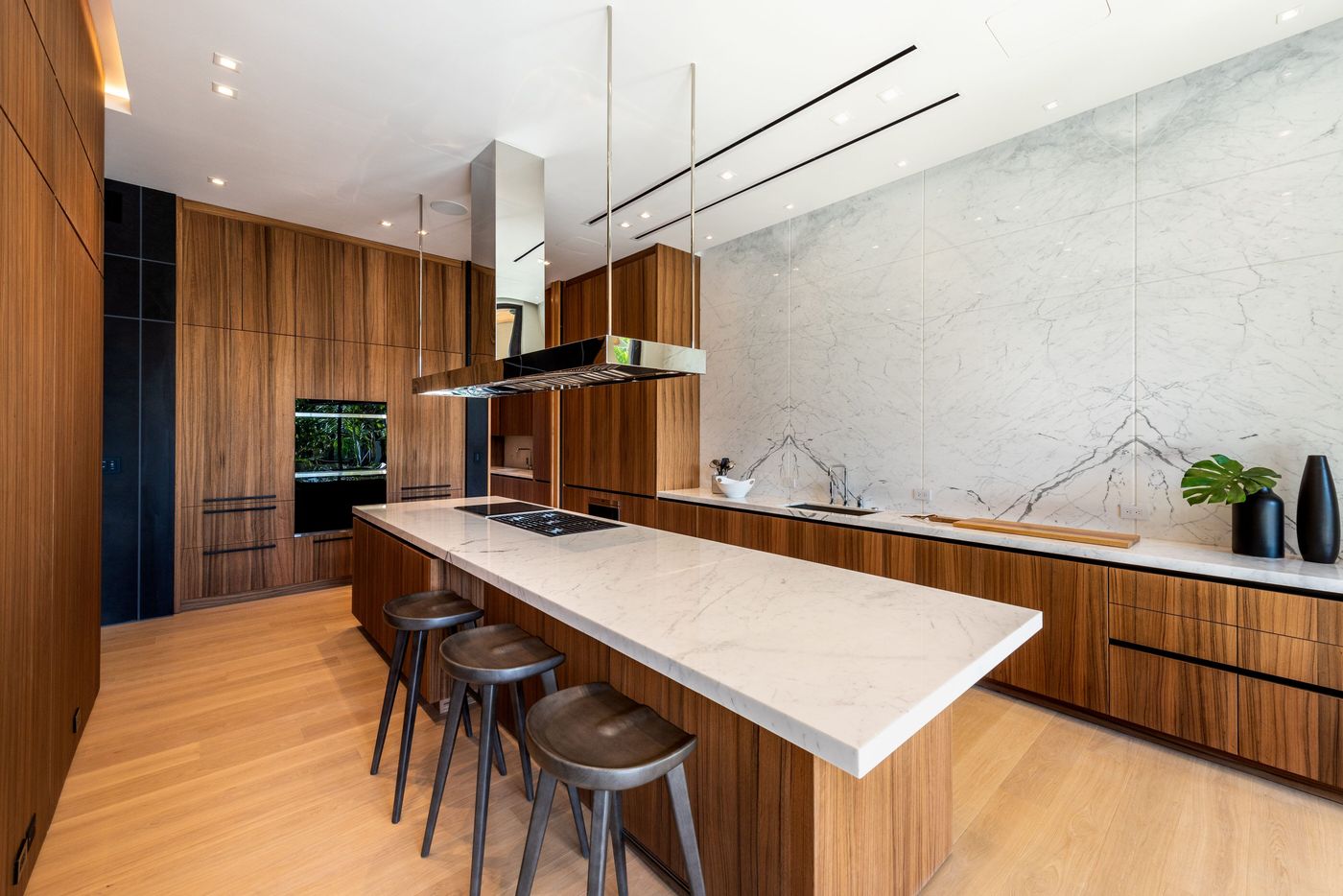
IN: Woody Kitchens
“Ninety per cent of our clients are doing all wood, compared to only 30% to 40% of clients who wanted all wood a year or two ago,” said Candace Matlock, senior designer at Italkraft, a design consulting firm in Miami. The grainy finishes conjure a “relaxing feeling, like a spa,” she said. A recent Miami Beach kitchen combines tropical and minimalist design, using floor-to-ceiling teak veneer and white oak flooring. “The wood millwork gives warmth to the barefoot elegance of the home,” said Kobi Karp, the Miami architect on the project.
OUT: The stark contrast of coal grey cabinets and white counters is the antithesis of warmth.
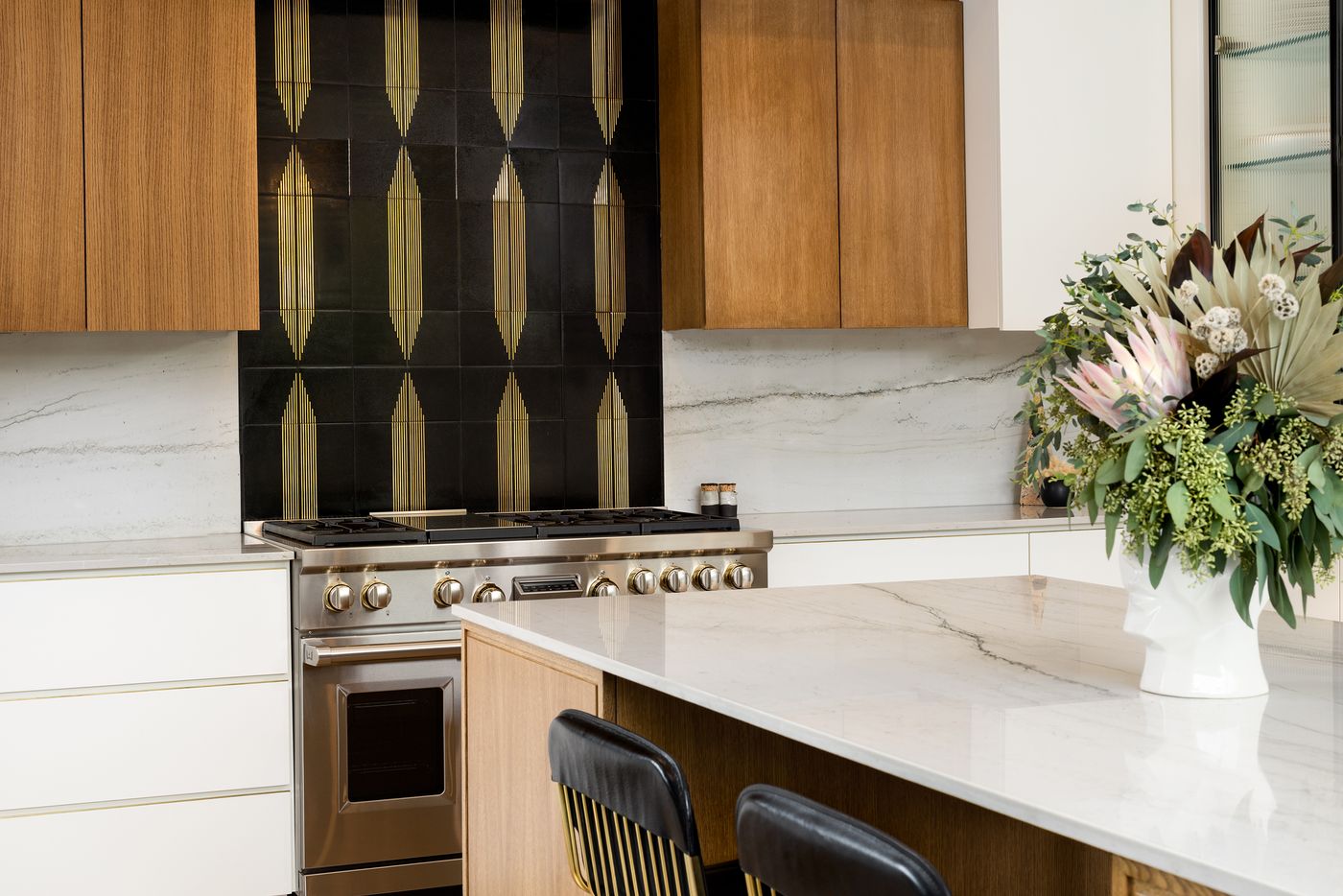
IN: Hidden Hoods
Designers are tucking stove vents behind cabinets or drywall both to save money and to shift the emphasis to less-prosaic features. “[A kitchen’s] visual statement should be more than an appliance,” said Mr. Maestri, who hid a vent behind a false cabinet front so a brass-inlaid backsplash of black marble could shine.
OUT: Ostentatious hoods
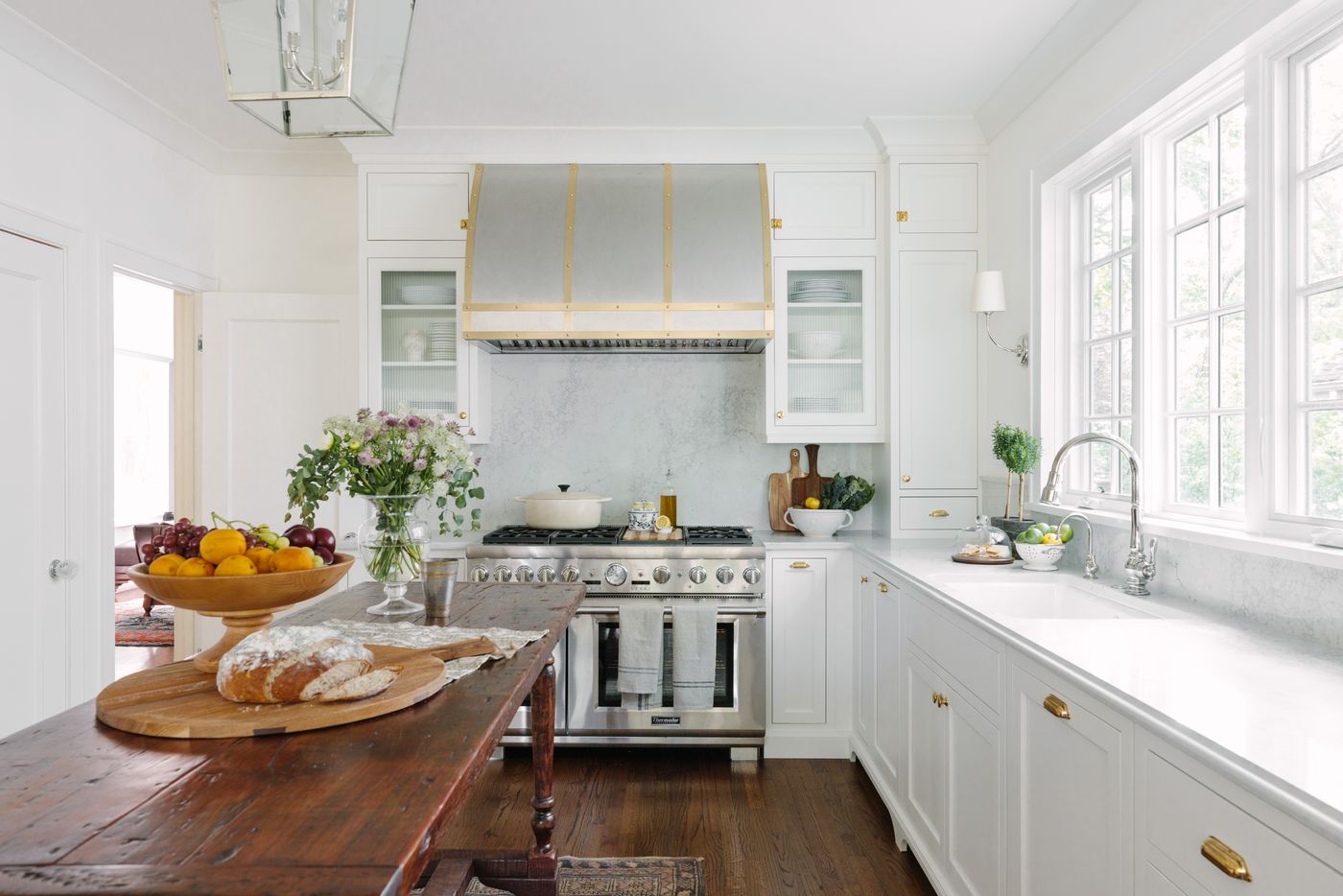
IN: Tablelike Islands
In the New York City kitchen above, design gallery and consulting firm Colony opted for the airiness and simplicity of a Parson’s-inspired white oak table instead of a voluminous island. In Chicago, interior designer Claire Staszak worked with a maker on Etsy to transform a pine table into a vintage-tinged country-style piece that suited a tight kitchen space. “The table brought character to the white kitchen, and unlike a solid island, created a feeling of circulation,” she said. Another perk: Portability offers more layout flexibility.
OUT: Islands with two levels—one counter height, the second raised to accommodate bar stools—skew commercial. Plus, “it cuts usable food-prep surface in half,” Ms. Staszak said.
IN: Glass Cabinets
See-through storage is clearly back but not in a traditional “grandma’s china cabinet” way, observed Mr. Maestri, who opted for reeded-glass panels set in black steel to complement a noir-and-brass backsplash behind the cooktop (shown left). The groovy glass not only adds texture but camouflages storage so “you see a ghost of what’s there,” he said. Ms. Staszak invigorates more-traditional, bevelled-glass cabinets by lining the interior with peek-a-boo Schumacher wallpaper.
OUT: Open shelving is left in the greasy dust.
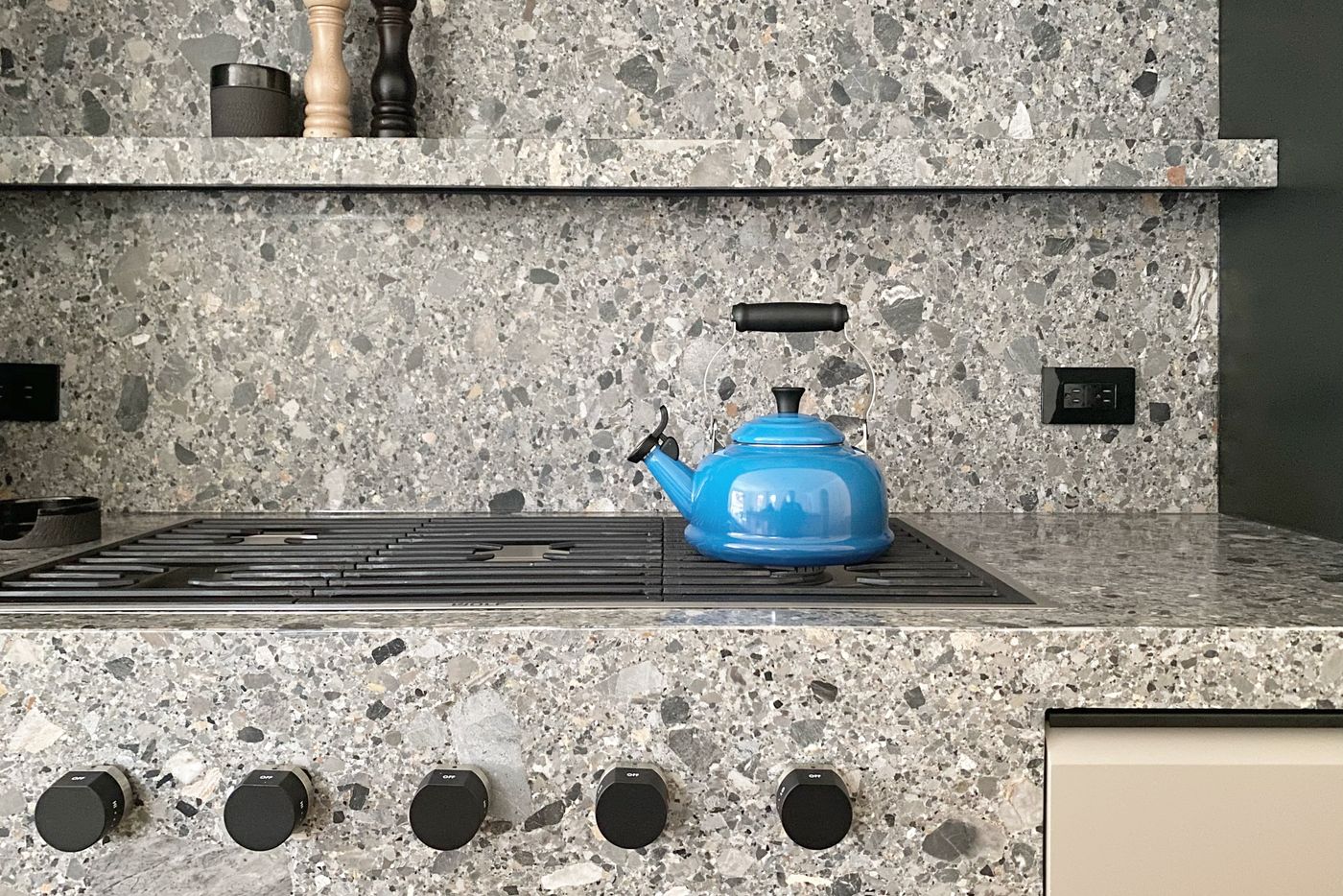
IN: Integrated Stove Tops
Rather than installing range-oven units, some designers are opting for the cleaner look of a stove top only, set into counter material, with ovens installed elsewhere. The range’s control knobs can then be integrated into material that matches the lower cabinets or counter material. In an East Hampton, N.Y., cottage, architect and designer Noam Dvir fused the range components into terrazzo-like Ceppo di Gré stone, using “the heavy marble like wrapping paper.” A polished stretch of stone flows seamlessly from a backsplash into a counter (into which the stove top is sunk) and then to a fascia for the knobs.
OUT: A standard range that disrupts visual continuity.
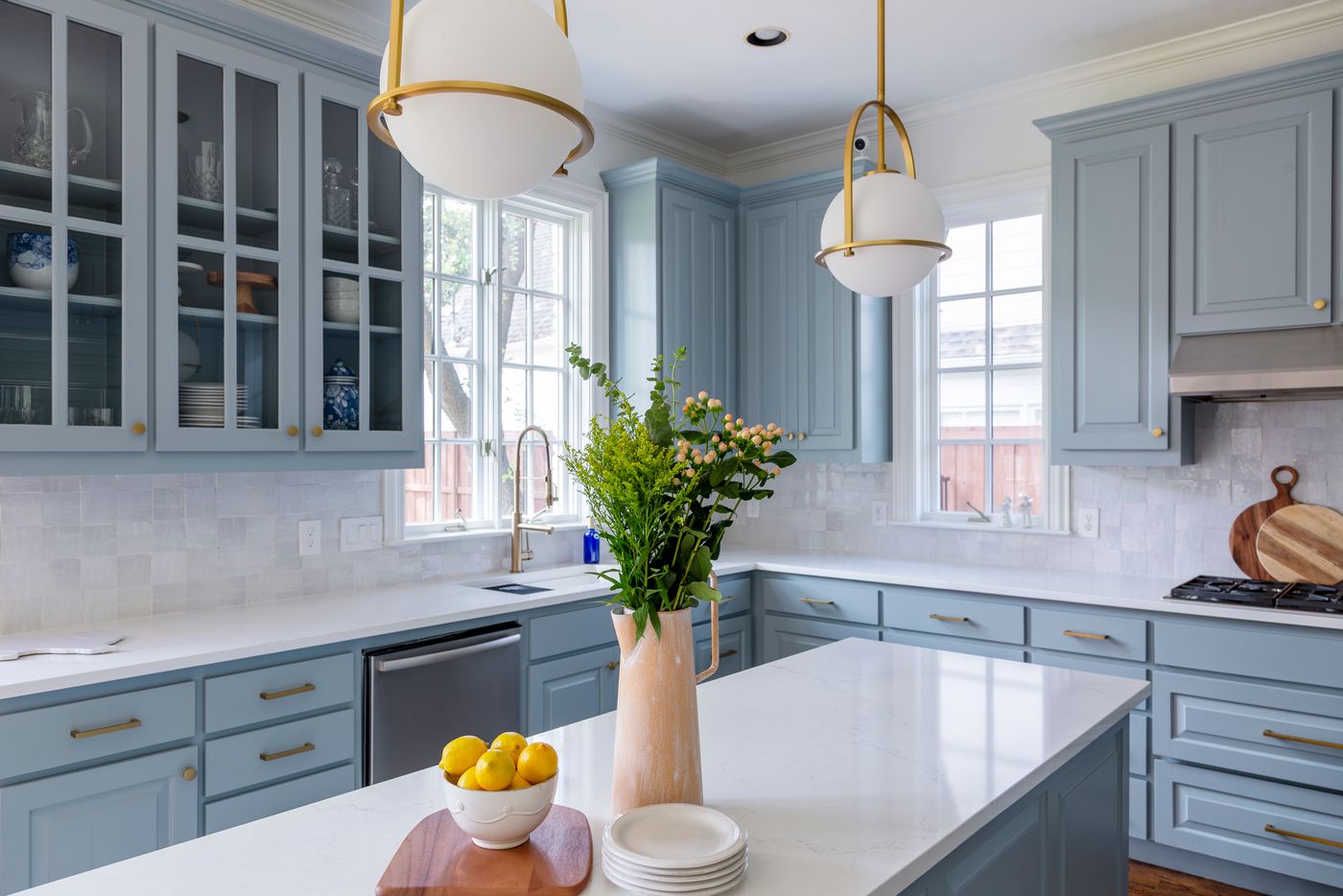
IN: Brass and Blue
The subtle wink of colour in a kitchen bathed in blue can ease you out of sterile, snow-white cabinetry. “Calming, subtle and versatile, soft blues can make spaces feel more open and airier,” said Arianna Cesa, colour marketing and development specialist at Benjamin Moore. Dallas interior designer Gaia Guidi Filippi woke up these original Shaker cabinets with Benjamin Moore’s Van Courtland Blue, then added hardware in brass, a “sunnier, softer” metal. Bonus: Homes whose real-estate listings mention brass can sell for almost 2% more than expected, according to recent research by real estate website Zillow.
OUT: White cabinets outfitted with chrome details can look lab-like and dated.
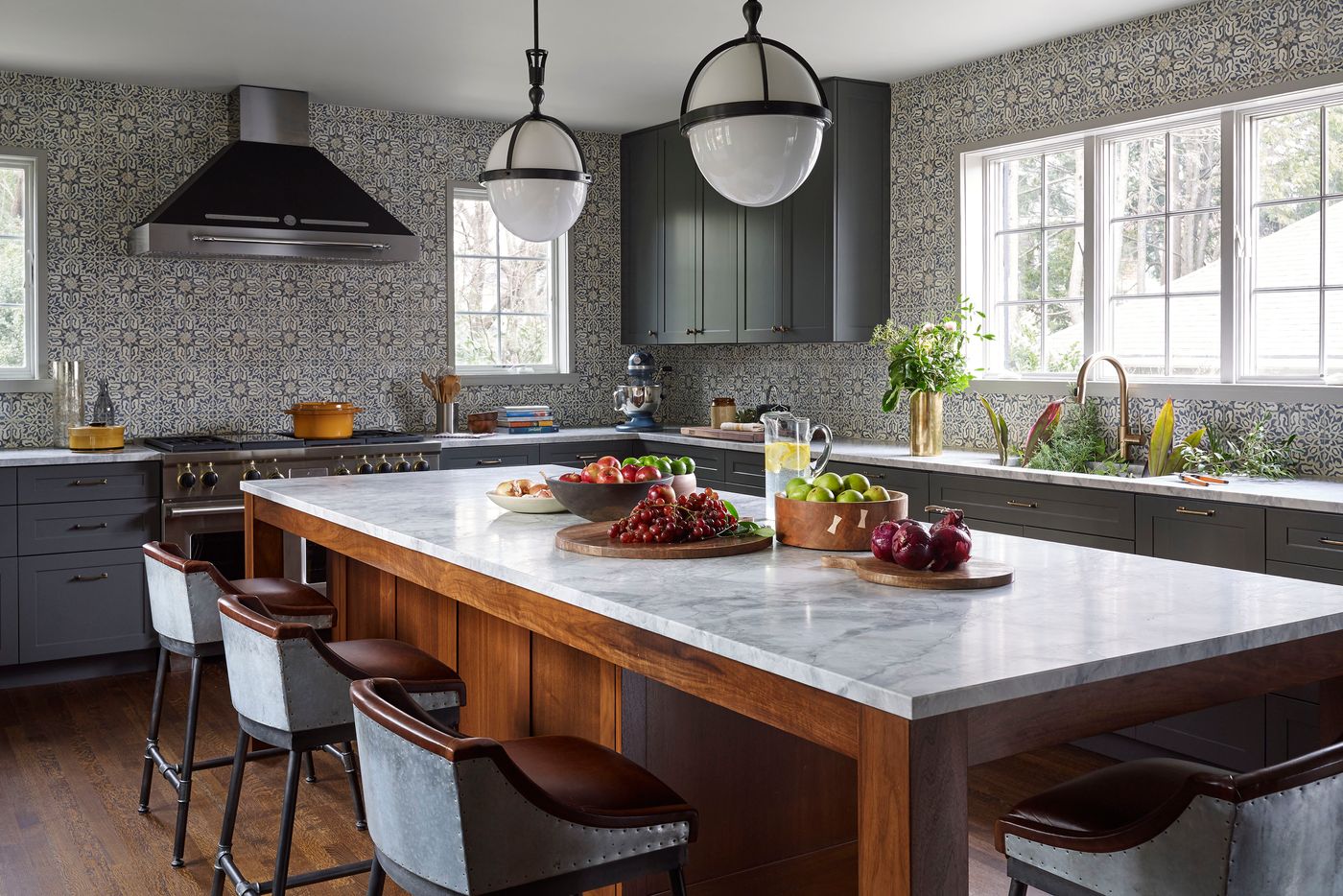
IN: Sky-High Backsplashes
“The backsplash has evolved from an accent to a feature,” said New York designer Elena Frampton, who used blue-grey, floral tile on kitchen walls that she had liberated from upper cabinets. “Taking the tile from counter to ceiling and flanking the windows packs a punch,” and proves much more stylish than a stack of appliances or cabinets, she said.
OUT: Solid tiles in a smooth finish relegated to a strip between countertop and cabinet.
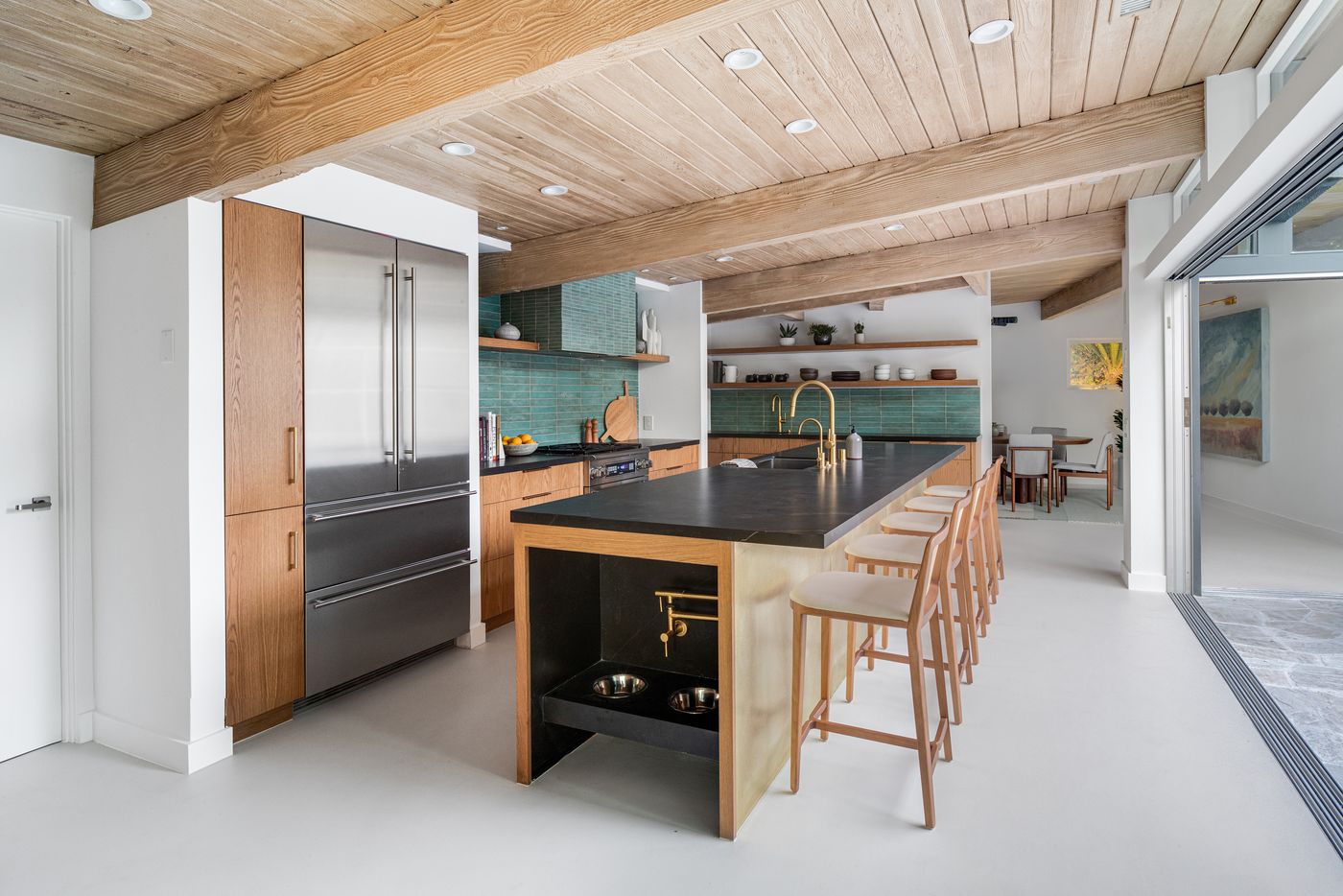
IN: Custom Pet Stations
“Your pets are members of your family, why not give them a beautiful space to enjoy their food and water?” said Jen Samson, an interior designer in Laguna Beach, Calif. For her canine-loving clients, Ms. Samson added a pot filler—a faucet on an extendable arm, easily plumbed from an existing island sink—and lined the puppy oasis with Calatorao marble to match the countertops. Brass fixtures kept the station in-line with the rest of the kitchen’s hardware. “It’s definitely a space saver,” Ms. Samson noted.
OUT: Pet water bowls skidding along the kitchen floor like hockey pucks, spilling contents on their way.
Reprinted by permission of WSJ. Magazine. Copyright 2021 Dow Jones & Company. Inc. All Rights Reserved Worldwide. Original date of publication: November 2, 2021
 Copyright 2020, Dow Jones & Company, Inc. All Rights Reserved Worldwide. LEARN MORE
Copyright 2020, Dow Jones & Company, Inc. All Rights Reserved Worldwide. LEARN MORE
This stylish family home combines a classic palette and finishes with a flexible floorplan
Just 55 minutes from Sydney, make this your creative getaway located in the majestic Hawkesbury region.
As Paris makes its final preparations for the Olympic games, its residents are busy with their own—packing their suitcases, confirming their reservations, and getting out of town.
Worried about the hordes of crowds and overall chaos the Olympics could bring, Parisians are fleeing the city in droves and inundating resort cities around the country. Hotels and holiday rentals in some of France’s most popular vacation destinations—from the French Riviera in the south to the beaches of Normandy in the north—say they are expecting massive crowds this year in advance of the Olympics. The games will run from July 26-Aug. 1.
“It’s already a major holiday season for us, and beyond that, we have the Olympics,” says Stéphane Personeni, general manager of the Lily of the Valley hotel in Saint Tropez. “People began booking early this year.”
Personeni’s hotel typically has no issues filling its rooms each summer—by May of each year, the luxury hotel typically finds itself completely booked out for the months of July and August. But this year, the 53-room hotel began filling up for summer reservations in February.
“We told our regular guests that everything—hotels, apartments, villas—are going to be hard to find this summer,” Personeni says. His neighbours around Saint Tropez say they’re similarly booked up.
As of March, the online marketplace Gens de Confiance (“Trusted People”), saw a 50% increase in reservations from Parisians seeking vacation rentals outside the capital during the Olympics.
Already, August is a popular vacation time for the French. With a minimum of five weeks of vacation mandated by law, many decide to take the entire month off, renting out villas in beachside destinations for longer periods.
But beyond the typical August travel, the Olympics are having a real impact, says Bertille Marchal, a spokesperson for Gens de Confiance.
“We’ve seen nearly three times more reservations for the dates of the Olympics than the following two weeks,” Marchal says. “The increase is definitely linked to the Olympic Games.”

Getty Images
According to the site, the most sought-out vacation destinations are Morbihan and Loire-Atlantique, a seaside region in the northwest; le Var, a coastal area within the southeast of France along the Côte d’Azur; and the island of Corsica in the Mediterranean.
Meanwhile, the Olympics haven’t necessarily been a boon to foreign tourism in the country. Many tourists who might have otherwise come to France are avoiding it this year in favour of other European capitals. In Paris, demand for stays at high-end hotels has collapsed, with bookings down 50% in July compared to last year, according to UMIH Prestige, which represents hotels charging at least €800 ($865) a night for rooms.
Earlier this year, high-end restaurants and concierges said the Olympics might even be an opportunity to score a hard-get-seat at the city’s fine dining.
In the Occitanie region in southwest France, the overall number of reservations this summer hasn’t changed much from last year, says Vincent Gare, president of the regional tourism committee there.
“But looking further at the numbers, we do see an increase in the clientele coming from the Paris region,” Gare told Le Figaro, noting that the increase in reservations has fallen directly on the dates of the Olympic games.
Michel Barré, a retiree living in Paris’s Le Marais neighbourhood, is one of those opting for the beach rather than the opening ceremony. In January, he booked a stay in Normandy for two weeks.
“Even though it’s a major European capital, Paris is still a small city—it’s a massive effort to host all of these events,” Barré says. “The Olympics are going to be a mess.”
More than anything, he just wants some calm after an event-filled summer in Paris, which just before the Olympics experienced the drama of a snap election called by Macron.
“It’s been a hectic summer here,” he says.

AFP via Getty Images
Parisians—Barré included—feel that the city, by over-catering to its tourists, is driving out many residents.
Parts of the Seine—usually one of the most popular summertime hangout spots —have been closed off for weeks as the city installs bleachers and Olympics signage. In certain neighbourhoods, residents will need to scan a QR code with police to access their own apartments. And from the Olympics to Sept. 8, Paris is nearly doubling the price of transit tickets from €2.15 to €4 per ride.
The city’s clear willingness to capitalise on its tourists has motivated some residents to do the same. In March, the number of active Airbnb listings in Paris reached an all-time high as hosts rushed to list their apartments. Listings grew 40% from the same time last year, according to the company.
With their regular clients taking off, Parisian restaurants and merchants are complaining that business is down.
“Are there any Parisians left in Paris?” Alaine Fontaine, president of the restaurant industry association, told the radio station Franceinfo on Sunday. “For the last three weeks, there haven’t been any here.”
Still, for all the talk of those leaving, there are plenty who have decided to stick around.
Jay Swanson, an American expat and YouTuber, can’t imagine leaving during the Olympics—he secured his tickets to see ping pong and volleyball last year. He’s also less concerned about the crowds and road closures than others, having just put together a series of videos explaining how to navigate Paris during the games.
“It’s been 100 years since the Games came to Paris; when else will we get a chance to host the world like this?” Swanson says. “So many Parisians are leaving and tourism is down, so not only will it be quiet but the only people left will be here for a party.”
This stylish family home combines a classic palette and finishes with a flexible floorplan
Just 55 minutes from Sydney, make this your creative getaway located in the majestic Hawkesbury region.









